The Cannabis Ripening Process: Steps, Stages & My TOP 12 Natural Bloom Enhancers
Interior to a Huckleberry Kush V3 fan leaf. Super frosty and loaded with terpenes. Photo by Professor P Dynasty Genetics.
Knowing when to pick a ripe cannabis bud is as much art as science
Many gardeners pick the buds before they are ripe.
They miss the intense odors and flavors of ripe cannabis, not to mention the enhanced high and stronger medical properties.
It’s worth the extra time to harvest ripe buds. Would you want to eat an unripe peach?
Each grower has their own processes and criteria for determining ripeness; but there are a number of things a savvy grower will watch for.
Most follow these steps:
INDOORS:
Most growers induce their plants to flower using twelve hours of uninterrupted darkness. However, plants can be forced to flower at a shorter period of darkness.
OUTDOORS:
Look for the first signs of flowering and then count back one week from that period. Look online for dusk and dawn hours in your region. Count the number of hours between dusk and dawn; that is the number of hours it takes to force flowering.
Once a plant is forced to flower, it takes between seven and nine weeks for it to ripen.
The ripening process of a cannabis bud
Galactic Punch x P.punchXMs.U. Photo by Professor P Dynasty Genetics.
Within a few days of establishing a long dark period the plant’s growth pattern changes. First, its rate of growth, which might be as much as two inches (5 cm) a day during the vegetative growth cycle, slows.
Under a flowering light regime, indica varieties usually grow another 20-25% taller and wider. Sativas can double in size before growth stops. Hybrids have growth patterns that vary between these two extremes. If you are intending to produce seeds and have both male and female plants growing, they begin to differentiate and become dimorphic.
The males elongate and grow new shoots that hold the flowers, or they develop flowers along their existing branches. Upon ripening, the male flower sacks, which contain copious amounts of pollen, tower above the females.
This difference serves the plant well, since marijuana is normally wind-pollinated, and the pollen from a tall male plant is more likely to catch the wind for a ride and drift down into an obliging female stigma below.
Within the first week, females start to grow stockier stems with shorter nodes between the leaves. The number of fingers on new leaves decreases, and the plants no longer form leaves on opposite sides of the stem but now alternate sides. Most importantly, the first stigmas appear.
By the second week, the first stigmas are joined by a cascade of flower growth. The plant is now spending most of its energy on flower development.
The flowering pattern changes as the stigmas begin to wither, dry, and turn red, purple, or even a light brown, similar to the pattern of fertilized flowers.
In the third week, a large number of stigmas form along the stem and on the tops of the branches. As long as it remains un-fertilized, the plant continues to produce new flowers.
Over a period of several weeks, the clusters grow thick with unfertilized flowers forming at each leaf node along the branches and main stem. The buds fill out with fresh, moist stigmas reaching out for pollen.
Just as the cluster looks like it’s finished, a new wave of flower growth appears, usually concentrated in a relatively bare spot. Successive waves of flowers may appear for weeks.
Flower ripening starts between the fifth and eighth week. The calyxes (ovaries) start to swell. These are false seed pods; the flowers have not been fertilized and no seed can develop. The swollen calyx is one indication of ripeness. It begins about two weeks before maturation, so the timing depends on the variety.
Note: The stigma's color is a factor of genetics and temperature. Many indicas and most sativas develop a red color; however, the color may change to purple or become more pronounced, particularly if the roots are subjected to a cool environment, below 55° F (12° C).
Here’s a detailed look at the stages of a ripening cannabis bud
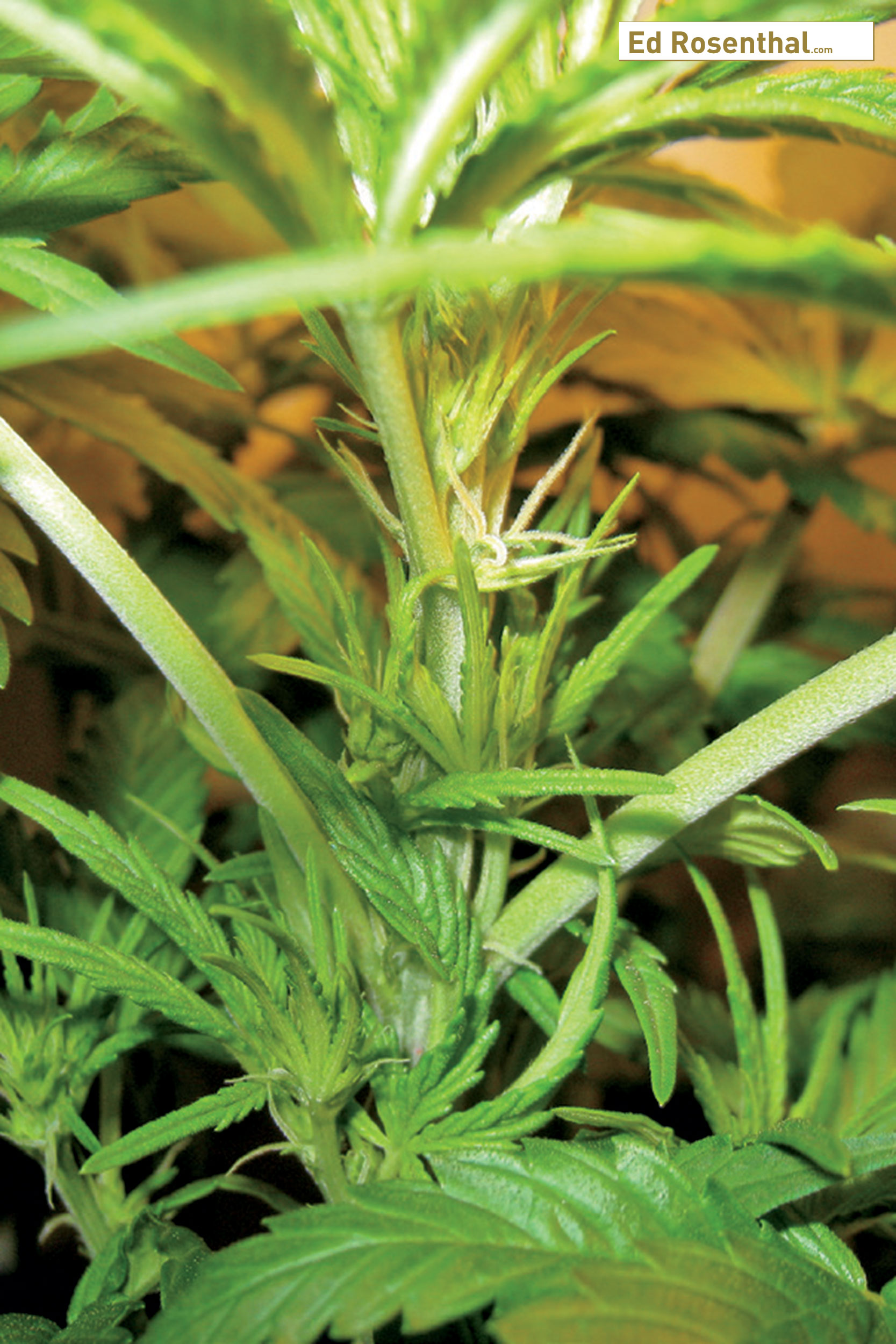
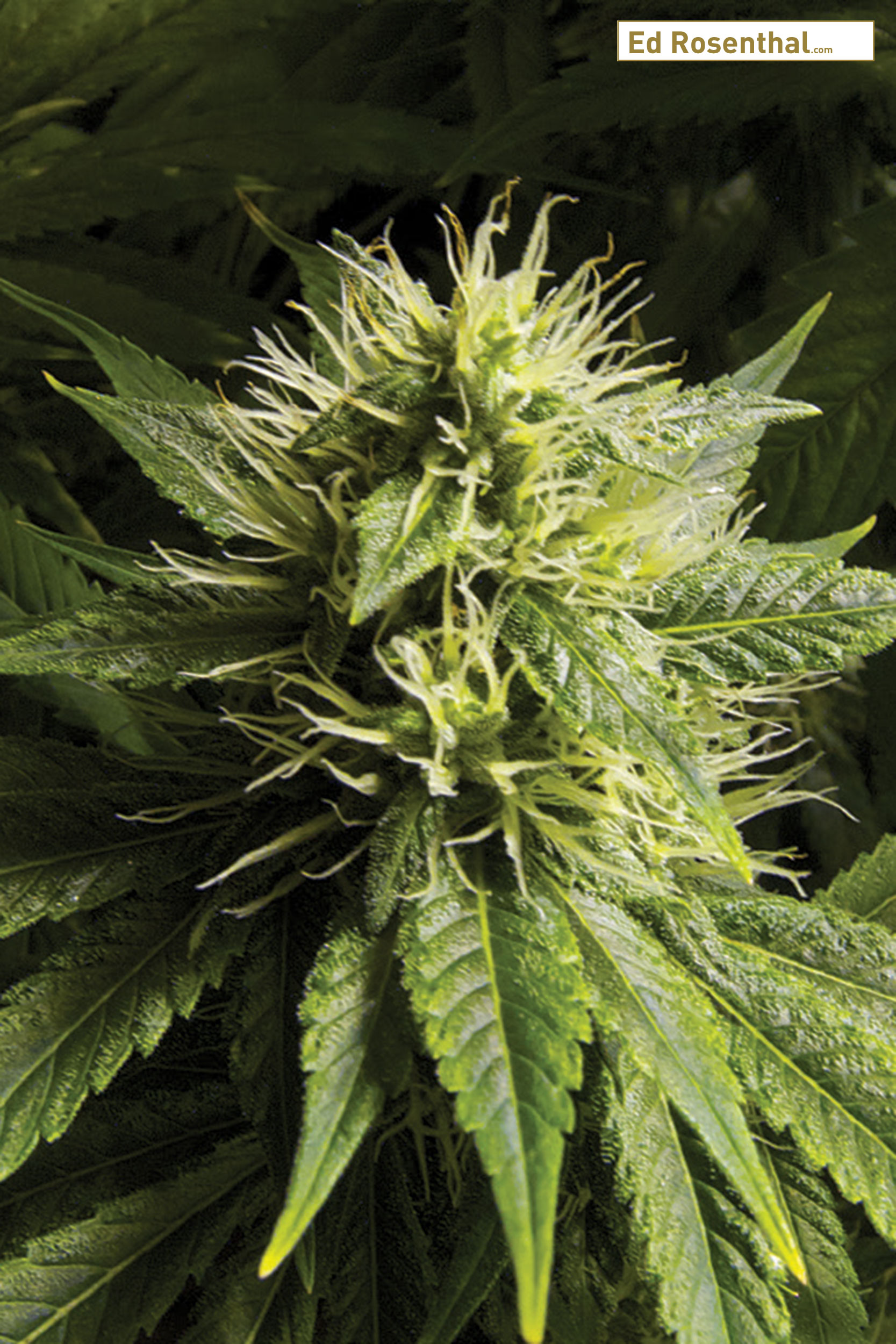

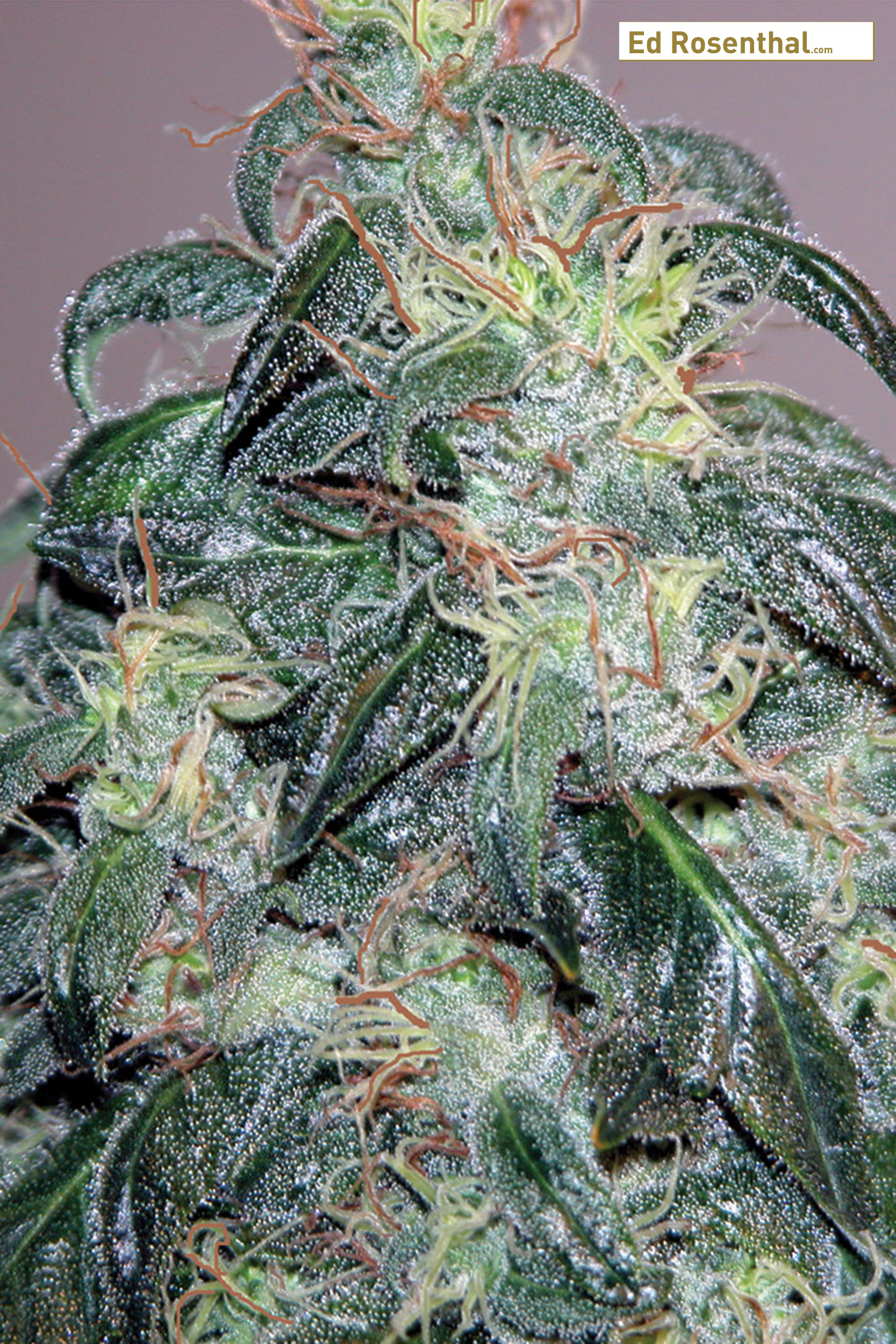
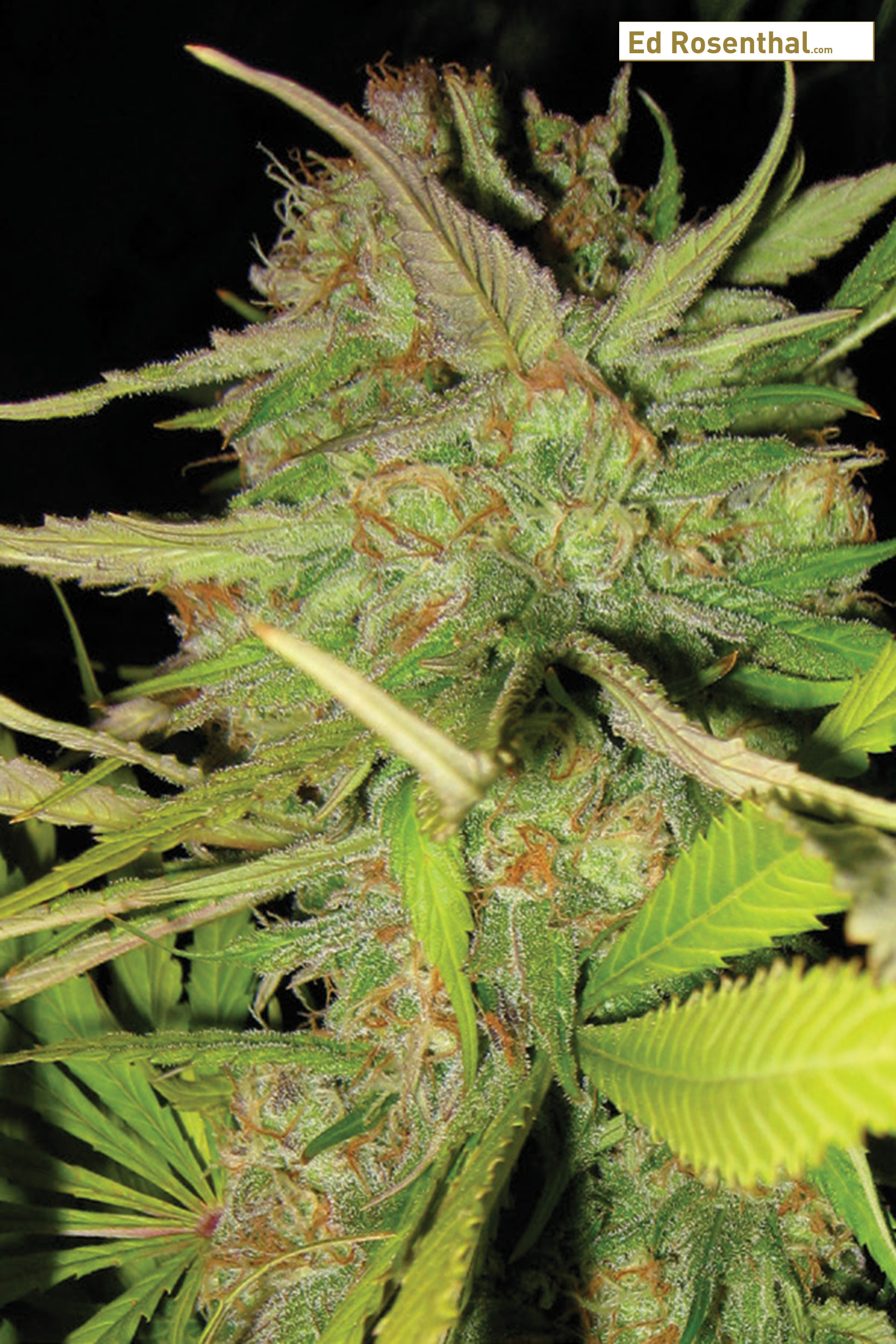

The ripening process of a trichome
Capitate trichomes, the tiny stalk-like resin glands that fill with THC, terpenes, and other cannabinoids, start to grow on the leaves surrounding the flowers. The flower areas will become totally covered with resin glands.
The length of this stage of growth can last from two to five weeks, depending on the variety. Varieties that ripen in seven weeks usually spend about three weeks in this period of heavy flower growth.
Late-season and long-maturing varieties linger in this stage for five weeks or more.
The trichomes become more prominent and stand more erect. The cap that tops each one swells with resin.
The viscous, sticky liquid contains terpenes and cannabinoids such as THC, which are produced on the inside membrane of the trichome cap. As the resin accumulates in the cap, the flowers’ odor becomes more intense.
The odor reaches a peak at the same time the trichomes begin to fluoresce in the light, twinkling like little crystals. In some varieties, they are so prominent that the whole bud sparkles.
Here’s a detailed look at the stages of a ripening cannabis trichrome
IMMATURE

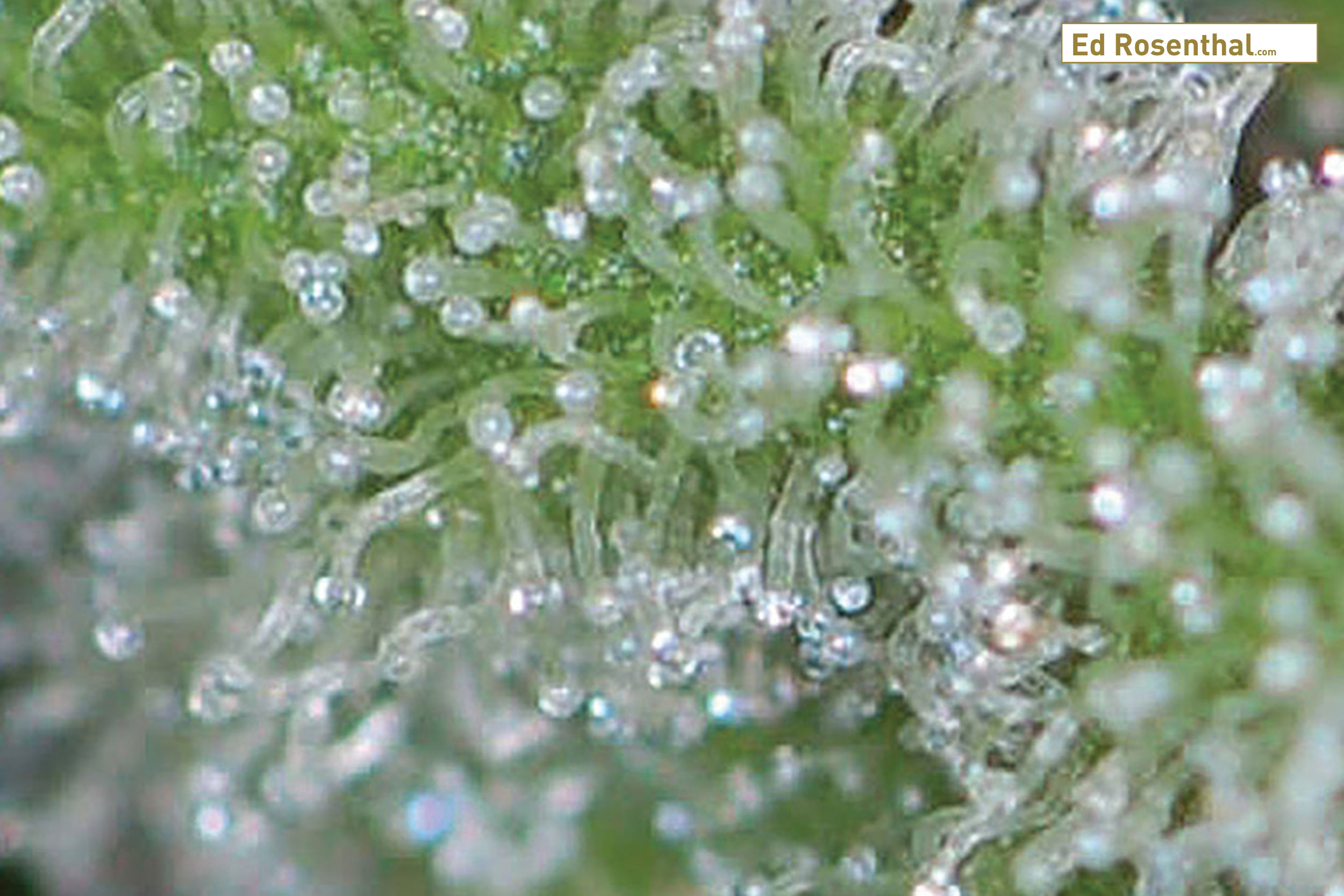
MATURE
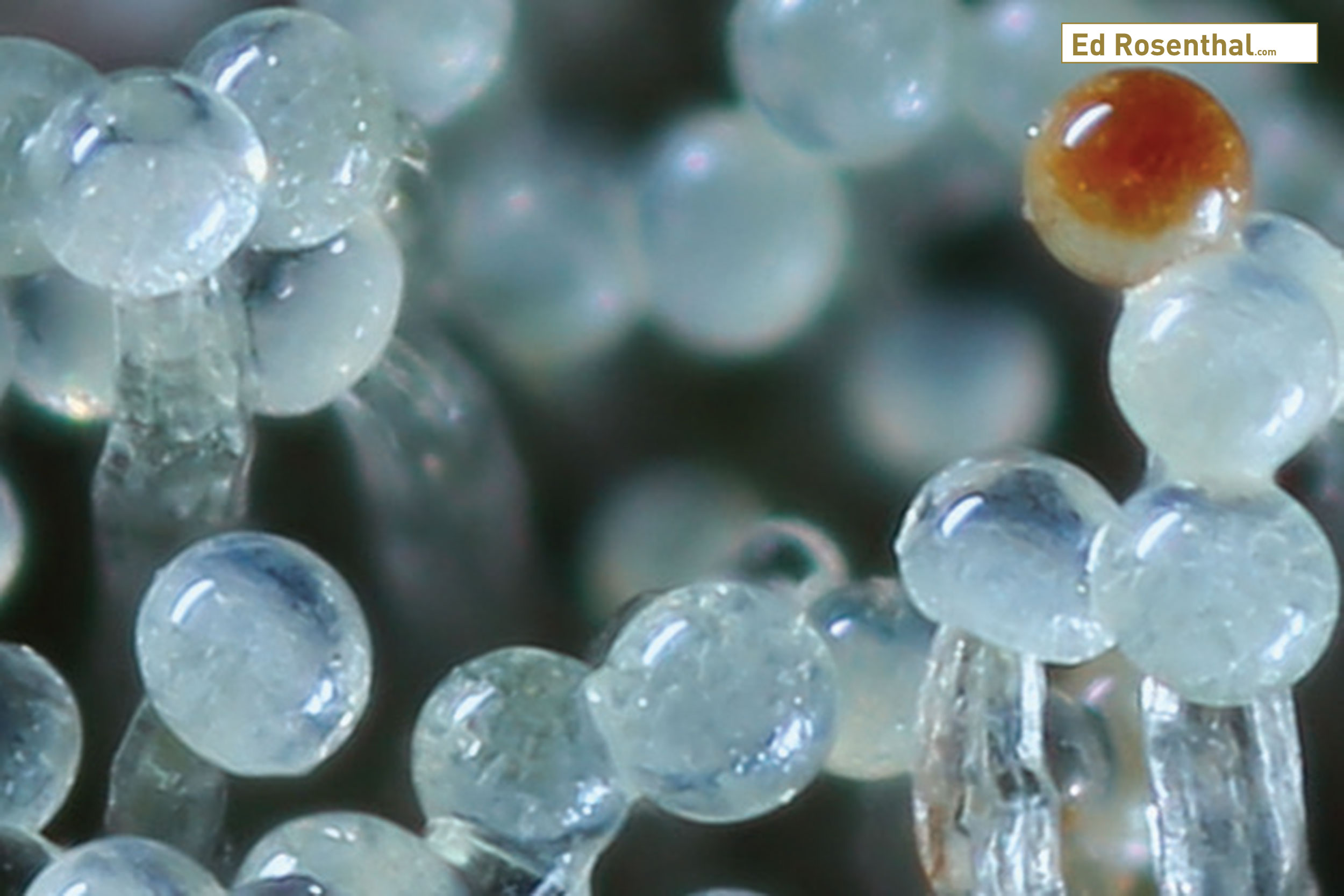
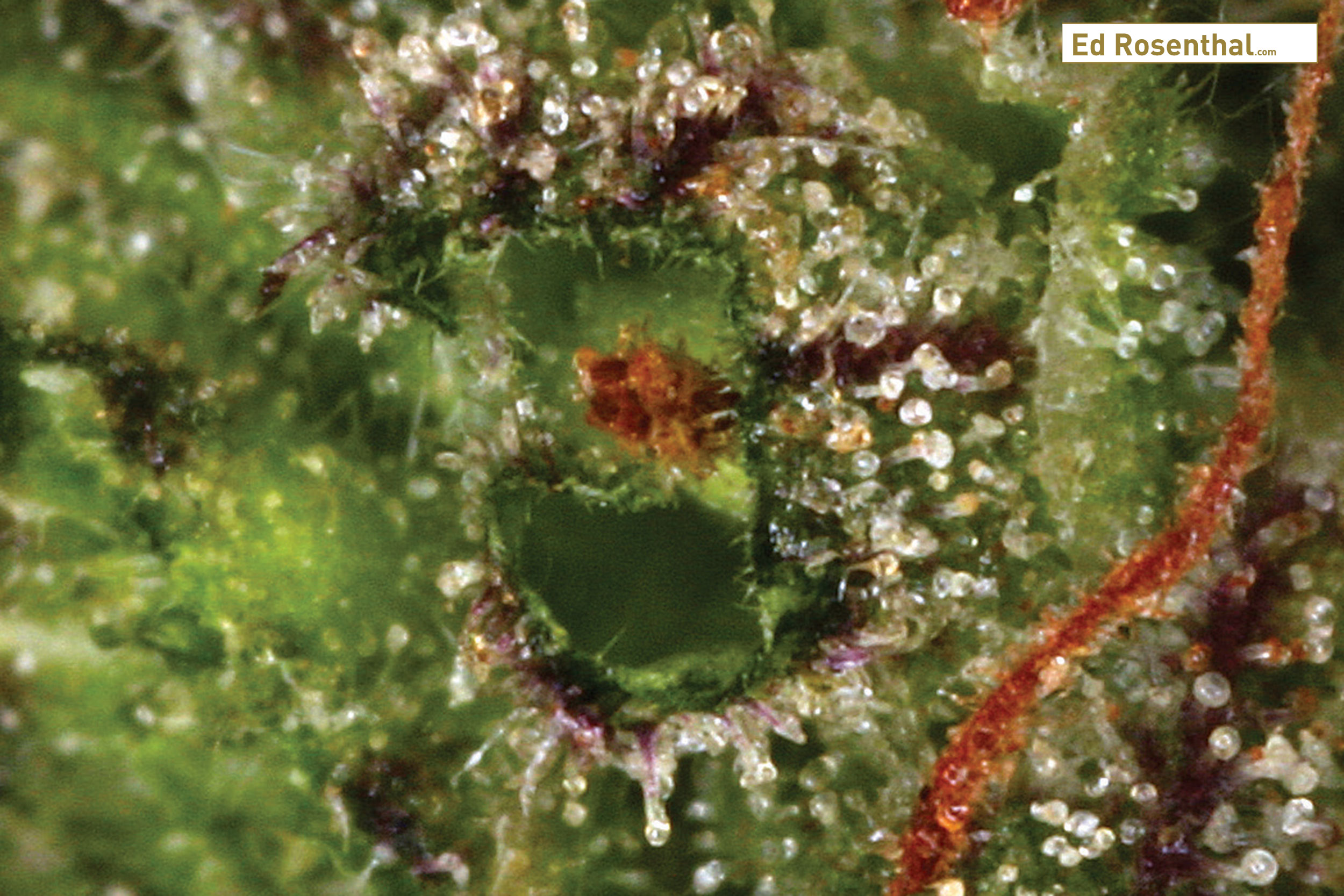
OVERRIPE
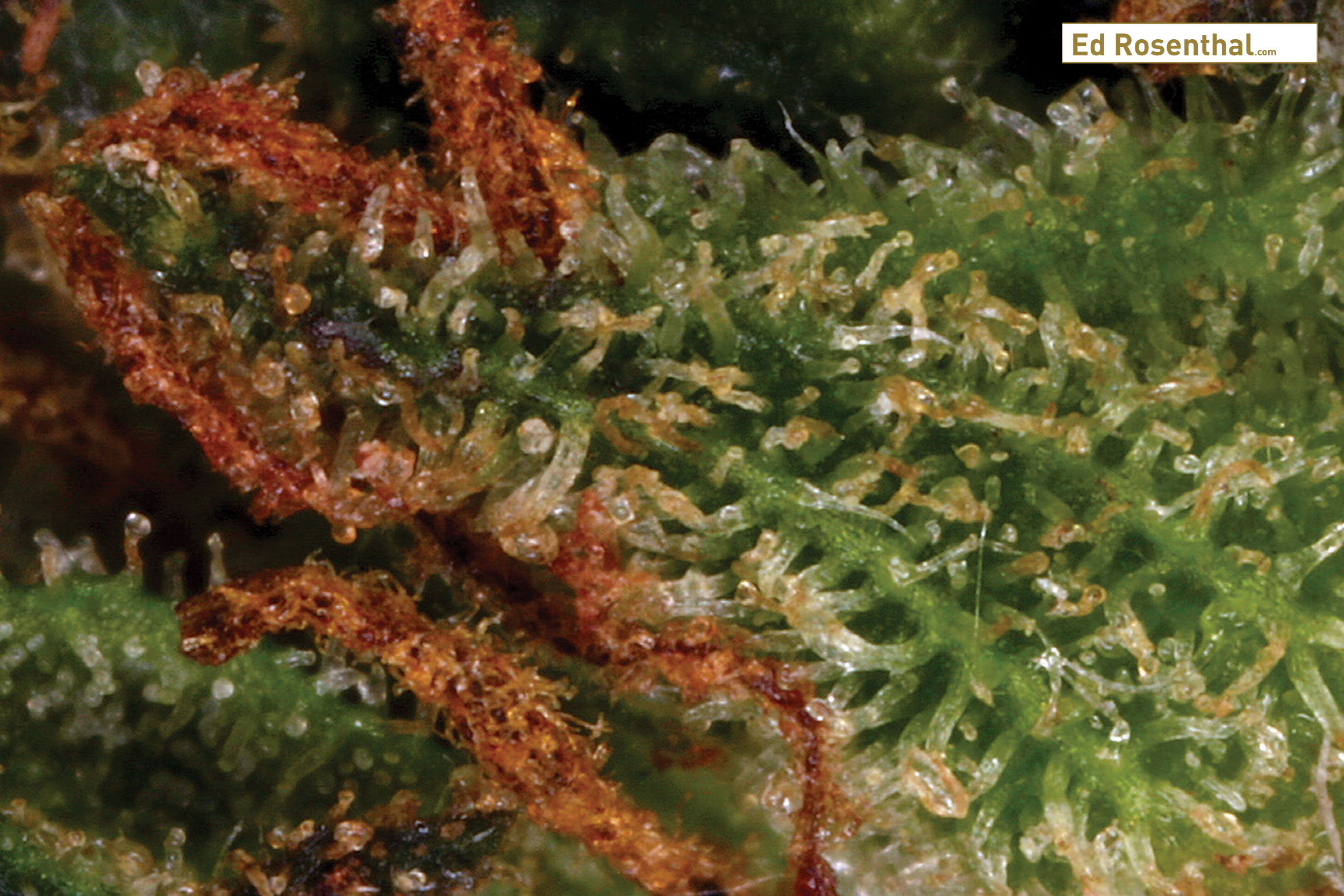
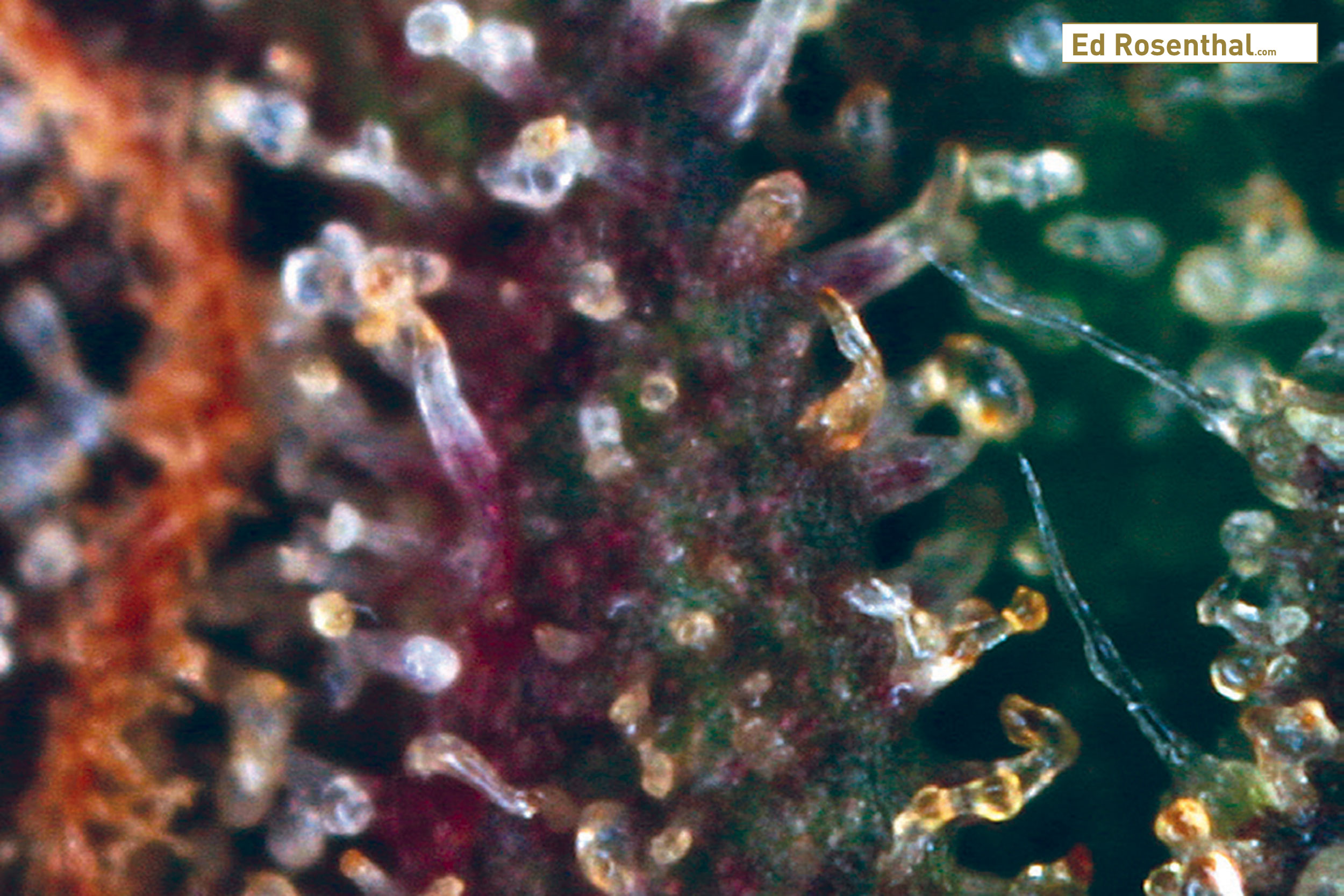
Cannabinoids and terpenes are costly for the plant to produce
Blue Mangoo Cookies by Dynasty Genetics..
So they must serve a purpose, or they would never have evolved. THC and the water-soluble compounds which impart the taste and aroma to cannabis flowers protect the plant:
• By acting as anti-bacterial agents.
• Repelling or trapping insects.
• The psychoactive effects probably causes mental discomfort to birds and mammals that eat it.
• THC levels increase as UV-B exposure increases, so THC probably protects the plant from UV light. This is not an uncommon use of chemistry by plants.
• To assure that the flowers and seeds are not consumed before they mature, plants produce a powerful array of chemicals to thwart predators.
• Once the seed matures and drops out of its resin-coated pod, it is far more palatable to animals that were repelled by the resin. Small mammals and birds may eat the seeds, and some of the seeds pass through the animals’ digestive systems and remain viable. As animals excrete viable seeds on suitable ground, they spread the plant to new locations.
Here are my top 13 recommendations for standout natural bloom enhancers
Because blooming plants need more nutrients (particularly phosphorus and potassium) to stimulate growth and flowering, growers often administer products such as bloom enhancers or stimulators. I have had good experience with the following products in enhancing my harvest.
1. Buddha Bloom: A good combination of natural organic ingredients
2. Amino-Aide: Contains amino acids that promote increased flower growth
3. Big Swell: A good combination of ingredients; promotes growth, contains nutrients and sweetener
4. Zyme: Contains the catalyst amylase, that turns starches into sugars, sweetening the buds
5. T-Rex: Contains growth proteins that also promote branching
6. Purple Max Snow Storm: Contains natural plant growth stimulators Triacontinol and Jasmonic acid that increase yields
7. Snow Storm: Contains growth stimulator Triacontinol. Increases yield
8. Sugar Peak Grand Finale: A good combination of natural ingredients that promote growth and sweetness
9. Bloom Master: A good combination of ingredients. Natural plant nutrients that promote growth in early-mid flowering
10. Massive Bloom: Contains Triacontinol, amino acids and excellent combination of all-natural nutrients that promote growth in early to mid flowering
11. Big Bud: Contains amino acids, flowering nutrients and plant hormones that promote flower growth
12. Nirvana: An excellent combination of natural ingredients including hormones that promote growth and flowering
UNACCEPTABLE BLOOM ENHANCERS
■ Cutting Edge Bloom: Uses Paraben
■ Ionic PK Boost: Uses Nipacide
And lastly...a bit about bud sweeteners
If using molasses or another sugar in the water/nutrient mix, continue using it throughout ripening, even when flushing.
One formula is 1 tsp/gallon (5 ml/4 L) or a tbsp/5 gallons (14 ml/19 L) of water.
Each of the products that were listed has an effect on the taste and the form of the buds. Unfortunately, there have not been side-by-side controlled tests so you have to rely on you own experience and those of others who have shared theirs’ in our cannabis community.
Join our cannabis community
Follow Us










